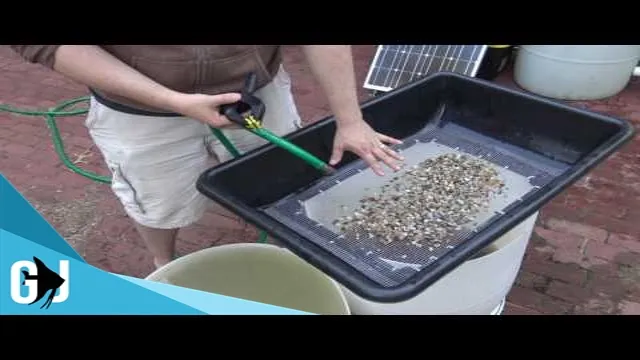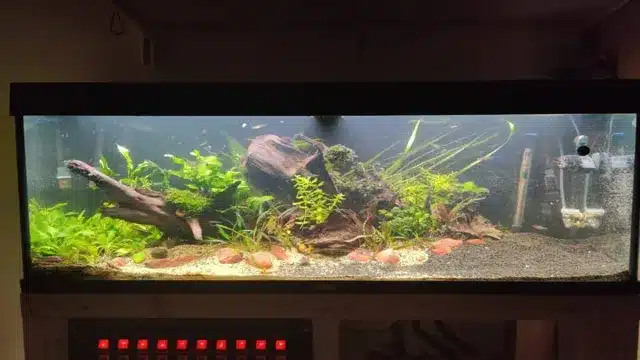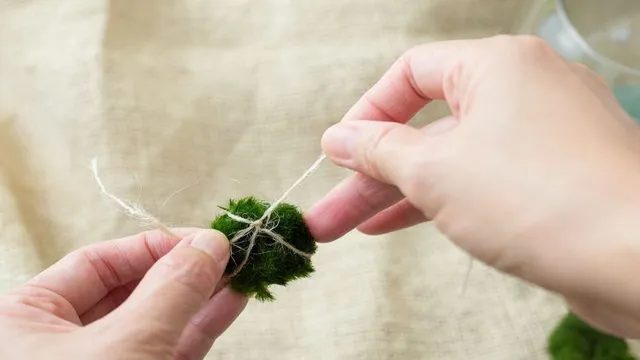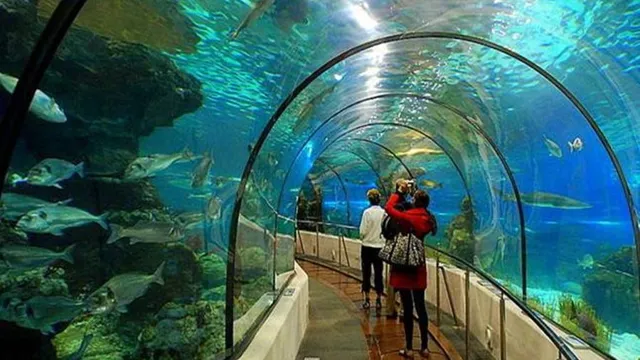Are you planning to set up an aquarium at home? Or, are you already an aquarium enthusiast? If yes, then you know the importance of cleaning the aquarium gravel before using it. Aquarium gravel is a vital component of any aquarium as it serves as a substrate for aquatic plants, helps to maintain the pH levels and looks aesthetically pleasing. However, it can also harbor harmful bacteria, debris, and toxins, which can be detrimental to your fish’s health.
Cleaning aquarium gravel before use is crucial to ensure the proper balance of a healthy aquarium ecosystem. By cleaning it, you eliminate unwanted organic material, excess food, and waste from the gravel surface, preventing the accumulation of toxic substances that could harm your fish. Additionally, cleaning gravel also helps to maintain clear water, alleviate algae growth, and keep the aquarium smelling fresh.
In this blog, we will show you some of the best ways to clean aquarium gravel before use, including manual cleaning, vacuuming, siphoning, and the use of chemical treatments. We will also provide you with some tips on how to maintain the cleanliness of your aquarium gravel in the long run. So, let’s dive into the details and learn how to keep your aquarium healthy and thriving!
Why Clean Gravel?
If you’re new to the world of aquariums, you might be wondering why you need to clean your gravel before adding it to your tank. Clean gravel can improve water quality by trapping debris and providing a home for beneficial bacteria. However, dirty gravel can introduce harmful bacteria and pollutants that can harm your fish.
To clean aquarium gravel before use, start by rinsing it thoroughly with water to remove any dirt or debris. Then, use a gravel vacuum to suck up any remaining particles, making sure to focus on areas with the most debris buildup. This process may seem time-consuming, but it’s worth the effort to ensure a healthy and thriving aquarium environment.
Remember to always use clean, dechlorinated water when adding new gravel or conducting routine tank maintenance to keep your aquatic pets happy and healthy.
Remove Debris and Contaminants
If you have an aquarium, you’ll know how crucial it is to keep the gravel clean. Gravel acts as a filter that traps debris and waste products, so it’s essential to remove it regularly to avoid chemical build-up and harmful bacteria growth. Cleaning your aquarium’s gravel is also vital for the health of your fish, as debris and contaminants can harm them over time.
By keeping the gravel clean, you’re providing a healthier environment for your aquatic pets to thrive in. So, if you want to ensure your aquarium stays clean and promotes a healthy environment for your fish, make sure you remove debris and contaminants from the gravel regularly. It’s a simple yet effective way to maintain your aquarium’s health and keep your fish happy.

Establish Beneficial Bacteria
Cleaning the gravel in your aquarium is crucial to establish beneficial bacteria that are essential for your fish’s health. When left uncleaned, fish waste, uneaten food, and other debris accumulate on the gravel, leading to ammonia and nitrate buildup. These harmful substances can stress your fish, compromise their immune systems, and ultimately cause disease or death.
By regularly vacuuming the gravel, you remove these damaging compounds and promote the growth of good bacteria that are responsible for breaking down waste products into less toxic substances. This helps to ensure that the water in your aquarium remains clean and healthy, providing a safe and comfortable environment for your fish. So, always remember to clean your aquarium’s gravel regularly to keep your fish happy and healthy.
Supplies Needed
When setting up a new aquarium, it’s important to clean the gravel before use to ensure a healthy environment for your aquatic pets. To start, you’ll need a few supplies, including a bucket, a colander, a brush, and water. Begin by rinsing the gravel thoroughly in the colander, using your hands or a brush to remove any debris or dust.
Next, fill the bucket with water and add the gravel, allowing it to soak for a few minutes. Stir the gravel around to dislodge any remaining dirt or debris, then carefully pour out the water and repeat the process until the water runs clear. Take your time during this process, as it’s crucial to remove any impurities from the gravel before adding it to your tank.
By following these steps, you’ll be well on your way to setting up a clean and healthy aquarium environment for your aquatic friends!
Bucket
When it comes to organizing your home or office space, a bucket can be your best friend. But, before you start using it to store everything, you’ll need some essential supplies. First up, a sturdy bucket that’s large enough to store the items you need without taking up too much space. (See Also: How to Grow Bamboo in Aquarium: Tips and Tricks for Thriving Aquatic Plants)
Depending on what you’re using it for, you may also want to have some dividers or bins to help separate and organize smaller items within the bucket. Additionally, grab some labels or marker pens to clearly mark what’s inside each bucket, making it easy to find what you need. Lastly, if you’re planning to move the bucket around, you’ll want to consider adding wheels or handles to make it more portable.
With these basic supplies, you can easily turn a plain bucket into a versatile and functional storage solution that will help you stay organized and efficient. So, grab your bucket and get ready to start organizing!
Gravel Cleaner or Siphon
When it comes to cleaning your aquarium, having the right supplies can make all the difference. Two popular options for removing debris from the substrate are gravel cleaners and siphons. A gravel cleaner utilizes a tube and piston mechanism to suck up debris while leaving the substrate in place.
A siphon, on the other hand, relies on gravity to create suction and remove debris. Both options are effective, but which one should you choose? It ultimately comes down to personal preference and the specific needs of your aquarium. If you have a heavily planted tank or small fish that could get sucked up, a gravel cleaner may be the better choice.
If you have a larger tank and want to remove water quickly, a siphon may be more efficient. Whatever option you choose, be sure to use it regularly to maintain a healthy and clean aquarium ecosystem.
Rubber Gloves
When it comes to cleaning, rubber gloves can be an essential supply to have on hand. They offer protection from harsh chemicals, prevent cross-contamination, and make it easier to scrub away grime and dirt. But not all rubber gloves are created equal! When choosing your gloves, prioritize ones that are comfortable and fit properly.
You don’t want gloves that are too tight and make your hands feel cramped or ones that are too big and make it difficult to hold onto things. Additionally, consider gloves that are textured on the hands and fingers, as this will give you better grip when scrubbing. Don’t forget to replace your gloves regularly, especially if they become torn or punctured during use.
Overall, having a good pair of rubber gloves in your cleaning arsenal can make a big difference in your cleaning routine.
Water Source
When it comes to setting up a water source for your household, there are a few supplies that you will need to keep in mind. Firstly, you will need to decide on the type of water source that you want to use, whether it is a well, a cistern, or a municipal water supply. Once you have decided on your water source, you will need to gather the appropriate equipment.
This can include a water pump, storage tank, and filtration system. Depending on the type of water source you choose, you may also need pipes and fittings. It is important to make sure that all of your supplies are of good quality to ensure that your water source is safe and reliable.
Remember, the quality of your water source can have a significant impact on your health, so it is essential to take the time to select, set up, and maintain your system properly.
Step-by-Step Guide
Keeping your aquarium clean is extremely important for the health and wellbeing of your fish. Cleaning the gravel before use is necessary to prevent the accumulation of debris and harmful bacteria. Here is a simple step-by-step guide on how to clean aquarium gravel before use: First, remove the gravel from the packaging and rinse it thoroughly in a bucket of clean water.
Use a strainer to get rid of any unwanted pieces. Once it is clean, place the gravel on the bottom of the aquarium. Fill the aquarium halfway with water and then use a gravel vacuum to remove any remaining debris.
Rinse the vacuum and repeat the process until the water remains clean. Once the process is complete, fill the aquarium with fresh water and treat it with a water conditioner before introducing any fish. By following these simple steps, you can ensure that your aquarium gravel is clean and safe for your fish to thrive. (See Also: How to Clean Aquarium Before Use – Tips and Tricks for a Healthy Home for Your Fish)
Step 1: Empty Aquarium
When it comes to setting up your aquarium, the first step is to empty it completely. This might seem like an obvious step, but it’s important to start with a clean slate in order to properly set up and maintain your aquatic ecosystem. To begin, you’ll need to disconnect and remove any equipment, decorations, and remaining water.
It’s a good idea to have a bucket and siphon on hand to make the process easier. Once the aquarium is empty, take the time to inspect the tank for any cracks or damage. This is also a good opportunity to clean the aquarium thoroughly with warm water and a soft sponge, avoiding soap and other cleaning products that could harm your fish or plants.
By starting with an empty, clean aquarium, you’ll be setting yourself up for success in creating a healthy and thriving aquatic environment for your aquatic friends.
Step 2: Rinse Gravel
After sorting out your aquarium gravel, the second step is to rinse it thoroughly to remove any debris and dust that might cloud your water. To do this, place your gravel in a fine mesh strainer and rinse it under running water. You can also use a bucket or colander, but make sure that the holes are small enough to keep the gravel from slipping through.
Gradually stir the gravel as you rinse it to ensure that all the particles are washed away. Once the water beneath it runs clear, you can be sure that the gravel is clean and ready to use. It’s important to remember to never skip this step as any debris, dust, or chemicals can encumber your water filter and create an unsightly environment for your aquatic pets.
By following this simple guide, you can ensure that your aquarium gravel is always clean and in great condition.
Step 3: Use Gravel Cleaner or Siphon
Gravel cleaner or siphon is an essential tool for maintaining the cleanliness of your aquarium. If you want to keep your fish and plants healthy, it’s important to regularly remove the waste and debris that accumulates in the gravel. Using a gravel cleaner or siphon is an easy and effective way to do this.
To begin, you’ll need to fill the siphon tube with water and then place the tube in the aquarium. Next, start the flow of water by suctioning the tube with your mouth or using a pump. Once the water is flowing, you can use the gravel cleaner to suck up the debris in the gravel.
Make sure to move the tube around to different areas of the aquarium to ensure you remove all waste. It’s important to be gentle when using the gravel cleaner, as you don’t want to disturb the substrate or harm any fish or plants. With regular use of a gravel cleaner or siphon, you can keep your aquarium looking clean and healthy for your aquatic pets.
Step 4: Repeat Until Water Runs Clear
To ensure that your hair gets a thorough cleansing, it’s important to repeat the shampooing process until the water runs clear. This step is crucial because it ensures that all the dirt, oil, and product build-up are removed from your scalp and hair. The shampooing process is not a one-and-done situation.
The first round of shampooing loosens the dirt and product buildup. However, the second round of shampooing will clean deeper, allowing the shampoo to work its way through your hair and scalp, leaving them in pristine condition. It’s essential to take enough time and use the right amount of shampoo.
Too little shampoo won’t clean your hair adequately, and too much shampoo will leave residues behind, leading to an oily scalp and dull hair. Repeat the shampooing process until the water runs clear to ensure that your hair is clean and healthy-looking.
Final Thoughts
Cleaning aquarium gravel before use is a crucial step in setting up a healthy and vibrant aquarium ecosystem. The process involves rinsing the gravel thoroughly using a strainer or colander under running water until the water runs clear. This helps remove any dust, debris, or chemicals that might be present in the gravel, leading to an unhealthy environment for the aquatic life. (See Also: How to Clean Dirty Aquarium Hardwater Without Harming Your Fish)
It is also advisable to boil the gravel for 10 to 15 minutes to sterilize it and eliminate any harmful bacteria or parasites that might be present before introducing it to the aquarium. By taking these steps, you can ensure that your aquarium gravel is safe and clean, providing a healthy and beautiful environment for your fish and aquatic plants to thrive. So, never skip the crucial step of cleaning aquarium gravel before use to avoid any unwanted problems down the road.
Conclusion
In conclusion, cleaning aquarium gravel before use is crucial to maintaining a healthy and vibrant underwater environment for your fish. Just like we need a clean and tidy home to thrive, our finned friends deserve a pristine tank to swim around in. So, roll up your sleeves, grab a bucket, and get ready to dive into the world of aquarium maintenance.
With a little effort and elbow grease, you’ll have your aquarium looking like a paradise in no time!”
FAQs
FAQ:
Why is it important to clean aquarium gravel before use?
It is important to clean aquarium gravel before use as it can contain harmful bacteria or debris that can harm your fish.
How often should you clean aquarium gravel?
It is recommended to clean aquarium gravel every 2-4 weeks to prevent the buildup of harmful substances.
What is the best way to clean aquarium gravel?
The best way to clean aquarium gravel is by using a gravel vacuum to remove debris and then rinsing it thoroughly with water.
Can you clean aquarium gravel without removing fish?
Yes, you can clean aquarium gravel without removing fish by using a gravel vacuum and doing partial water changes.
Should you use soap to clean aquarium gravel?
No, you should never use soap to clean aquarium gravel as it can leave harmful residues that can be toxic to fish.
How do you disinfect aquarium gravel?
You can disinfect aquarium gravel by soaking it in a bleach solution, rinsing it thoroughly, and then letting it air dry.
Can you reuse aquarium gravel from an old tank?
Yes, you can reuse aquarium gravel from an old tank, but it is important to clean and disinfect it before using it in a new tank.







